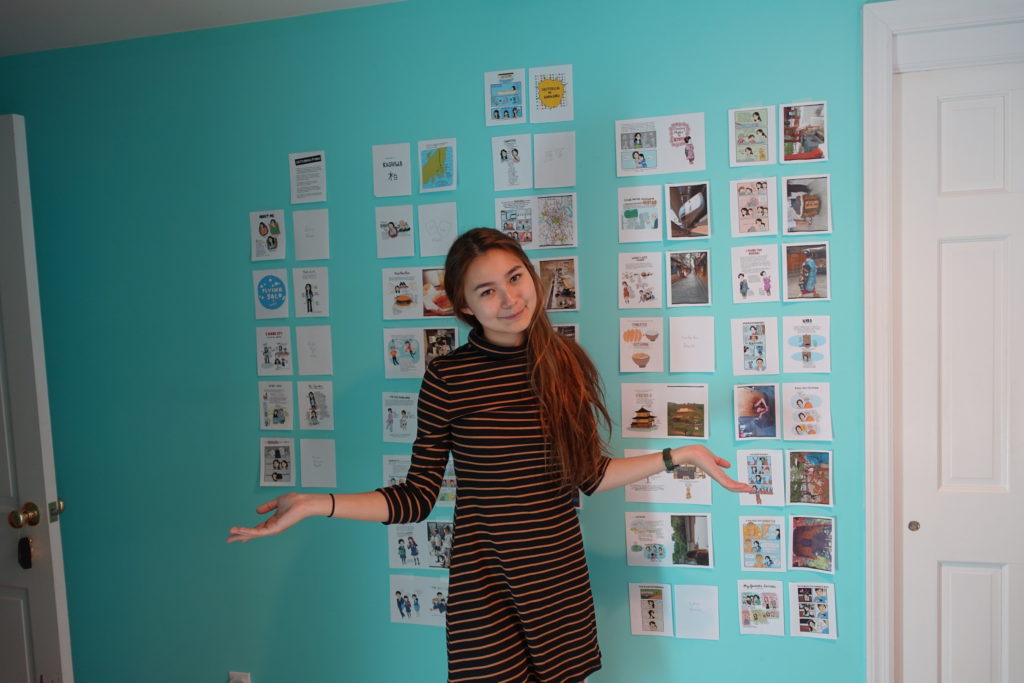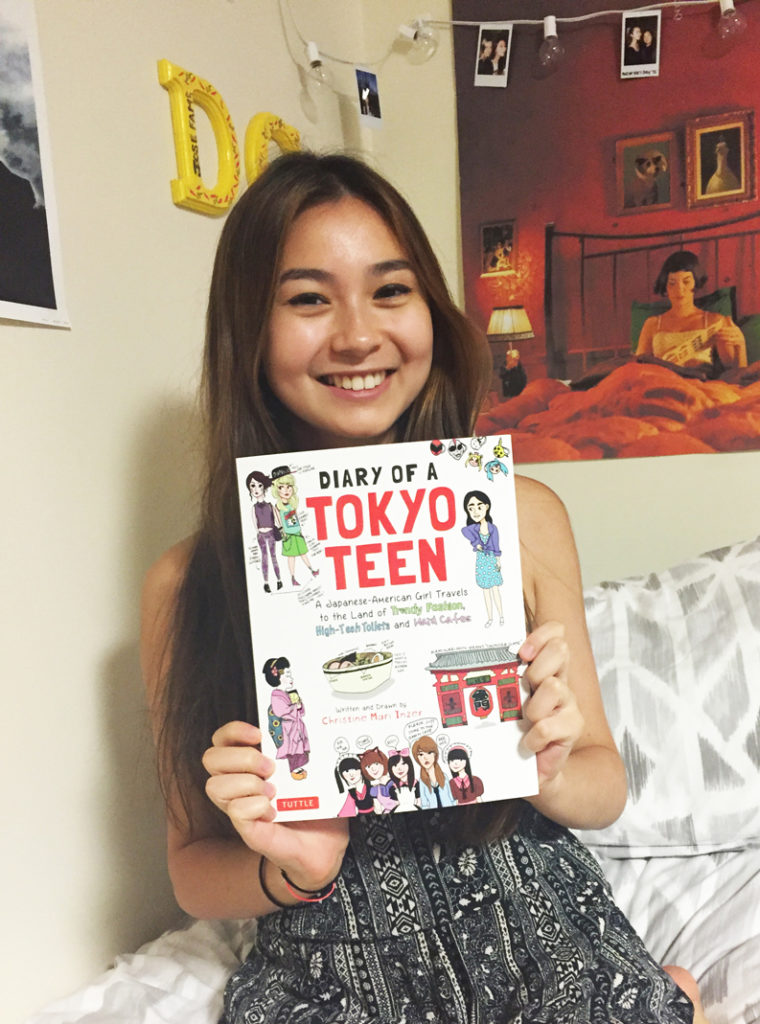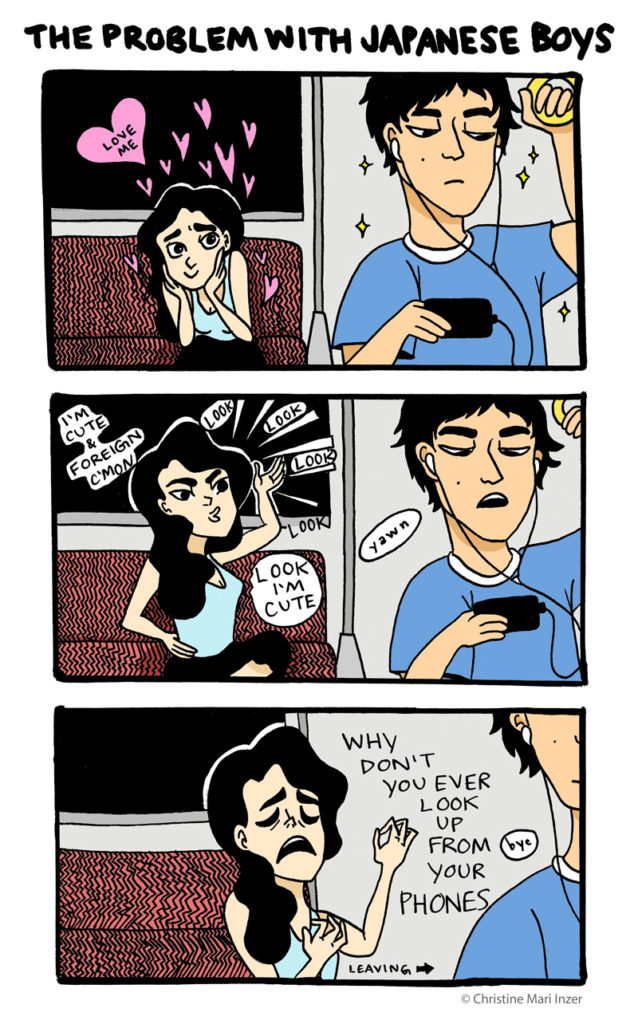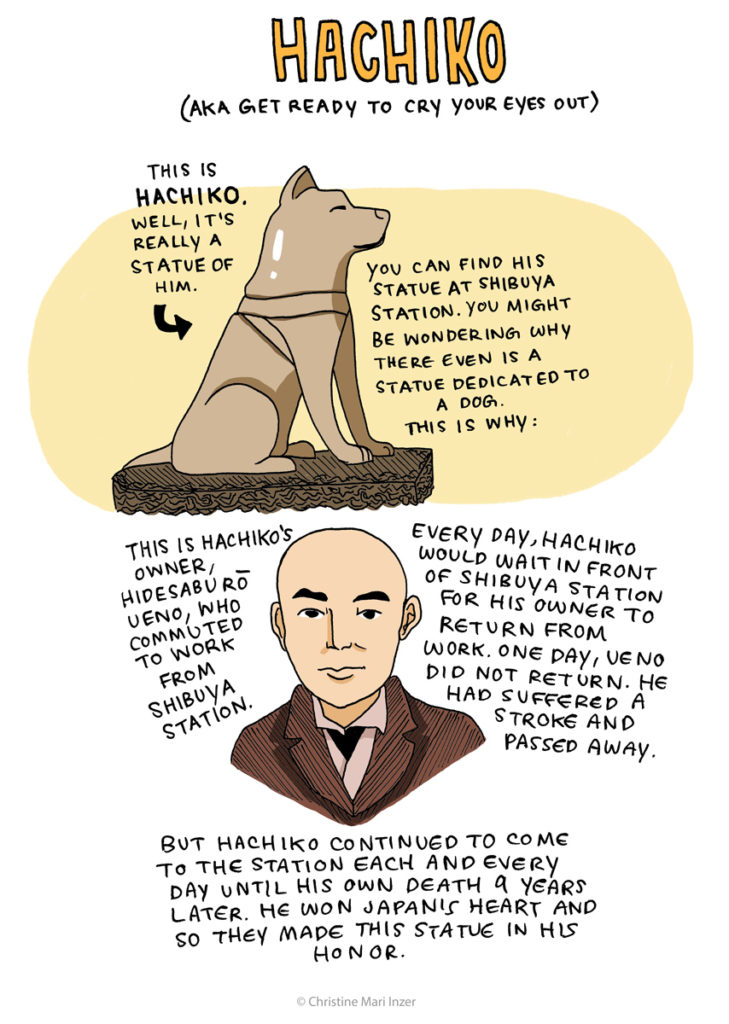An Interview With Teen Author Christine Mari Inzer
How One Teen Came, Saw And Conquered Tokyo
BOOK CORNER — From the time she could hold a crayon in her hand, Christine Inzer was drawing. Now, she shares her unique illustrations and journal entries in a book about her trip to Tokyo to reconnect with her family and rediscover her roots.
Going to Harajuku — the center of Tokyo’s fashion and youth culture — without your parents, is every Japanese teen’s dream (myself included). But as I recently came to know, this dream crosses the ocean and is by no means unique to us Japanese girls. In Diary of a Tokyo Teen, I was reminded of myself just a few years back: an inspired teen from a small rural town, dreaming of the glitzy, neon streets of Tokyo, especially the bold billboards and the quirky fashion trends of Harajuku.
It was like that scene from Kamikaze Girls when Kyoko Fukada walked the long, lifeless paths of rural Ibaraki dressed up as a Lolita dreaming of the big city. For girls of my generation, only now in university, back in the day — Harajuku was that kind of dream.
Published by Tuttle in September 2016, Diary of a Tokyo Teen is a travelogue about Japan written and illustrated by Christine Mari Inzer, an American-Japanese bicultural teen raised in the U.S. When she was 15 years old, she headed from the U.S. to her birthplace in Japan for an eight-weeks-long summer adventure — one she documented in an illustrated journal, which she initially self-published when she was just 17. In Japan, she stayed in Kashiwa, Chiba Prefecture, where her grandparents live and spent most of her time together with them exploring the surroundings and other parts of Japan — such as local summer festivals and a short trip to Kyoto. Through colorful and witty illustrations and photos, she captures every moment and memory of her stay in the country of her dreams.

Christine Inzer in the process of putting her book together
After reading her book recently, I felt a close connection with Christine — now a young adult about the same age as myself. I decided to reach out to her and see what made her publish her book, what she thought of Japan and how other young writers and artists can follow in her footsteps.
When you first started documenting your trip, were you thinking that it might be a good book?
Christine Inzer: When I was writing it, it never crossed my mind that this was going to be an actual book that people around the world would read. This allowed me to open up and create something that was deeply personal, something that I couldn’t have done if I were aware of the fact that others were going to see what I wrote and illustrated. However, I have discovered that a lot of readers found that the book reminds them of their own experiences traveling in Japan or in other countries. That makes me happy because I know that I’ve managed to reach a certain audience even if that was never my original intention.

Inzer posing with her book Diary of A Tokyo Teen at her home in the U.S.
What made you decide to publish your drawings and notes?
CI: In high school, I was really into graphic novels. Lucy Knisley’s French Milk introduced me to the travelogue genre and I was immediately drawn to the idea of using art to record one’s travel experiences. Then, the summer before my junior year, my dad encouraged me to travel to Japan by myself to get in touch with my roots (I was born in Tokyo and my mother is Japanese) and record my experiences in a travelogue of my own.
How did you manage to publish a book at such young age?
CI: There are great tools online that allow anyone to self-publish a book. I originally self-published my book in black-and-white with the title Halfway Home: Drawing My Way Through Japan and sold it online through Amazon. The book received positive reviews and I was very fortunate to have several writers and comic artists I admire write testimonials for it, including Lucy Knisley, Hope Larson, Jeff Smith and Kate Williamson. Tuttle eventually found the book and approached me about publishing an updated, full-color edition.
How did you feel when Diary of a Tokyo Teen was published?
CI: I was blown away. During the creative process it can be easy to forget that there is an actual end to the process, and it was only when I saw my book in print in my very own hands that I realized the creative journey was over. For a moment, I couldn’t actually believe that it was real.
What were the most- and least-favorite parts of your experience in Japan?
CI: I love everything in Japan: the food, the fashion, the trains and especially the convenience stores! However, if I can share one thing I loved experiencing in Japan, it would be Shibuya Crossing at night. Least favorite thing? I guess if I had to name one thing… probably natto (fermented soy beans).

A chapter from Diary Of A Tokyo Teen dealing with Japanese boys.
What would your advice be to other young people who want to publish their works?
CI: Just do it! You can self-publish online, like I did. Also, don’t be afraid to ask others for help. I put together a list of my favorite writers and comic artists and wrote emails to them. The response I received was overwhelming. The writing community is incredibly supportive.
Would you like to publish more books?
CI: Yes. Next year I plan to study abroad in Japan. I would love to do a follow up of my book, from an older — and hopefully wiser — point of view. I look forward to a whole new set of adventures.

Hachiko also made it into Inzer’s book.
Would you prefer to live in the U.S.A. or Japan in the future?
CI: That’s a tough question. I was born in Tokyo and my grandparents live there. But I was raised in the U.S. from the age of 5. I love Tokyo so much that I know it will always be a part of my life. Would I live there permanently? I’m not sure, but I hope I have the chance to live and work there for an extended period.
Have you faced any challenges or difficulties because of your background as a bicultural kid?
CI: My background is something I have always been proud of, but it has come with its own challenges. I think the biggest challenge I face as a half-Japanese, half-American is that sometimes it can be hard to feel like I have a home in both countries. In Japan, it’s easy for people to notice that I’m not fully Japanese and it makes me different, whereas in America I’m made to feel different sometimes because of my Japanese heritage. I learned that the best way to deal with this is to simply embrace your background for what it is and find a balance between the two.
Diary of a Tokyo Teen: A Japanese-American Girl Travels to the Land of Trendy Fashion, High-Tech Toilets and Maid Cafes, by Christine Mari Inzer, is available at your favorite bookstore or from Amazon. You can also learn more about her from her website.
















Leave a Reply